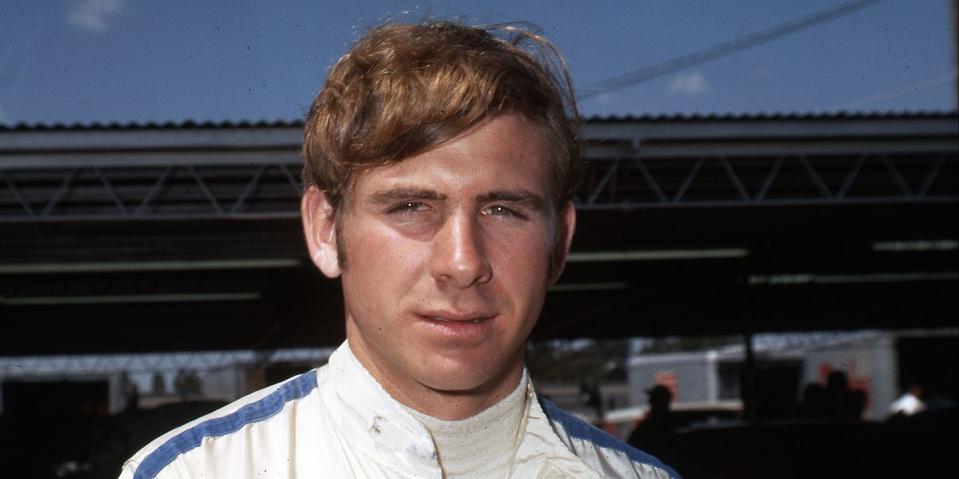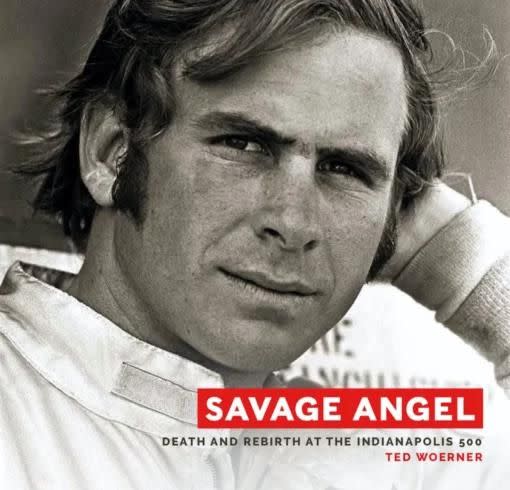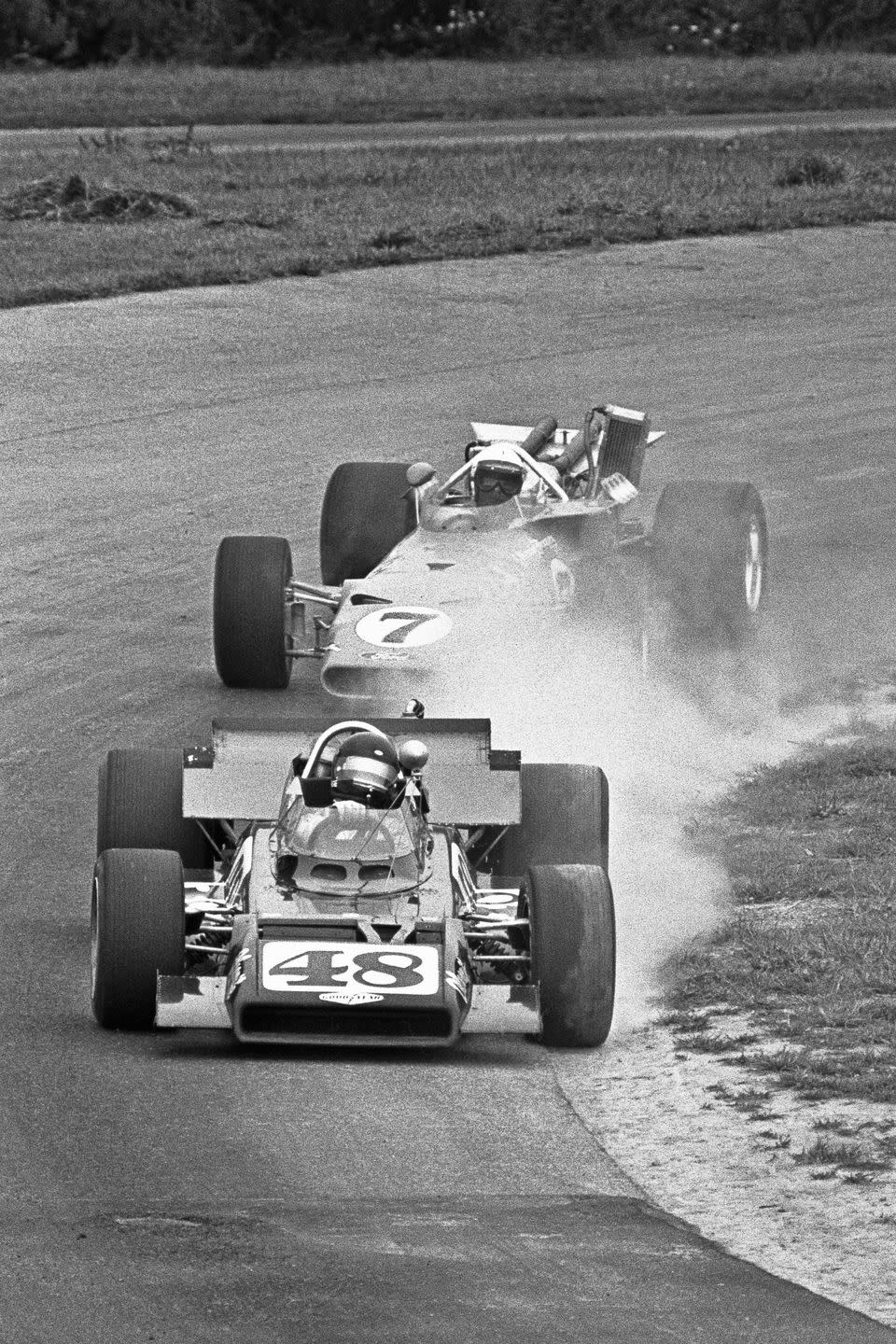Indianapolis 500 Becomes a Haven to Swede Savage's Daughter

It has been 50 years since Swede Savage’s fiery Indianapolis 500 crash inflicted injuries that claimed his life 33 days later.
His daughter Angela, born three months afterward, has turned her own related struggles with isolation, drugs, alcohol into a faith-based triumph through IndyCar-racing “exposure therapy.”
Her father never won at Indianapolis, but here is where Angela Savage has scored her biggest victory.
Winning the Indianapolis 500 is considered a life-changing experience. Just showing up for the 2014 race was that for Angela Savage.
The 107th running of the Indianapolis 500 marks a half-century since her father, Swede Savage, suffered injuries that eventually claimed his life July 2, 1973. This father she never met—the one whose wristwatch and wedding ring she wears to honor his memory—has had a profound influence. The NTT IndyCar Series’ Memorial Day classic is the linchpin to the journey of the Carmel, Ind.-based mother of two boys.

Savage Angel Death and Rebirth at the Indianapolis 500
$60.00
autobooks-aerobooks.com
For the first time, she has brought sons Chance and Cruz to the Indianapolis Motor Speedway to see the Turn 4 spot where their running-in-second-place grandfather’s race car made a sharp left and darted across the track at a high rate of speed into the inside retaining wall. Laden with a fresh 70 gallons of methanol, or about 500 pounds of the unholy explosive fuel, the Patrick Racing STP Eagle-Offenhauser disintegrated into a massive fireball.
And now the race and racetrack that unloosed such hell curiously has become a haven.
Friends of her father coaxed Angels into attending the 2014 event, and reluctantly she accepted. That started the healing process.
“My body, my mind just wants to disassociate, but so I just kept coming back and coming back and coming back and it's just gotten easier and easier every year," Angela Savage told Autoweek. "I know that he wouldn't change anything about how everything went down. And now that I've spent enough time here, and I call it my exposure therapy. Even being at the track, my heart just pounds, and you wait for it to calm down and it never does."
The stories, the fond tales of Swede Savage from the embracing racing community are a salve.

“I spent my whole life with this chronic, chronic loneliness. I always felt so lonely, because I didn't feel like anybody could understand where I was coming from. I didn't think anyone had trauma like that, so public . . . and fire . . . and all of this," she said. "Coming back to the Indy 500, that's when I met Rick MacDonald, Dave MacDonald's son, and his sister Vicki and Eddie Sachs Jr."
Dave MacDonald and Eddie Sachs were killed in the 1964 Indianapolis 500 in a fiery multi-car crash. Savage also became acquainted with Rick Duman, son of racer Ronnie Duman, who suffered severe burns in that wreck and four years later died from injuries at the Rex Mays Classic at the Milwaukee Mile. Angela Savage’s husband, Scott, now works for Rick Duman’s Turn 4 Restoration operation at Brownsburg, Ind.
Meeting them, she said, “really helped take away this chronic loneliness that I always had because I knew there was somebody else on Planet Earth that knew exactly what my life is like or what I was going through. At least we're not alone. I call us the ‘Turn 4 Kids,’ because that was the same corner and the same spot and the fire. So anybody that's lost a loved one at the track I refer to as the Turn 4 Kids. It's a club that nobody wants to be in. But once you're there, you find your people, and it's sacred.”

The author of Savage Angel: Death and Rebirth at the Indianapolis 500 with collaborator Ted Woerner said, “I've gotten to the point where I wouldn't change anything either about my dad's life and the way he went and my life and the way I went. I wouldn't change anything. I made peace with it all. I really came back full circle. In the beginning, I had such a rough time just functioning through life. I was really a mess. I was on such a self-destructive path. I didn't really want to be here.
"When I was a little girl, I would have a hard time just leaving my room. I was really, really unhealthy. And I had suicide attempts and drug problems and alcohol problems. And I was on heavy drugs and alcohol by 10 years old. So while we were writing this book, we learned a lot of things.”
Among them was the conclusion of recent medical studies that posthumous children often suffer ”transgenerational PTSD” in the womb. Mental-health issues and addictions stem from the concept that the disorder has been genetically hard-wired into the child. Savage said she can relate to families affected by the 9/11 terrorist acts.
“After 9/11,” Savage said, “people started to realize that a lot of the firefighters wives were pregnant. So they were like, ‘Oh, let's go check on the kids and see how they're doing.’ Well, lo and behold, they're not doing very well. What happens is transgenerational trauma. If a woman is that pregnant and experiences a trauma like that, not only does she get PTSD, but the baby gets it, too. We're literally in there, trying to grow, but we suck up all the trauma. Learning that was such an important information for me, because that started my journey to self-forgiveness and self-love.
“So the book isn't just about my dad and his career. We go way into what happens to a baby after something like that. Writing this book, I wanted to be honest and come to the table with things. But then there's some things in there that I really thought I would take to the grave, but it just became too heavy. I couldn't carry it anymore. I thought, 'If God's promise is true, we can trade the ashes for beauty.' And so I was like, ‘Just bring it all to the table’ It's like my backpack was full of bricks. I brought it here, and I dropped it off in Turn 4,” she said.
What better place than the Brickyard to do that?
“The idea behind sharing those things was to inspire other people. I believe we're only as sick as our secrets, and we all have them. And we all put on this mask that we're happy and everything's great, and none of us is really great on the inside,” she said. “By sharing all these really traumatic, ugly things, I hoped to inspire other people to get theirs up and out. The more you try and push it down, it will fester inside you and it will rot you. Disease causes disease. If I can be this open and honest, then maybe other people can be open and honest and then experience their healing. And then we can all learn that maybe we are more the same than we are different and bond together. We all go through, we all have a story, and we all go through traumatic things. And it's better to get 'em up and out of you than to hold you inside. It can become a tumor. It can become a lot of things.”
The research produced maybe more insight into herself than into her dad with the hip Beach-Boy looks, the natural Southern-California-cool casualness, and cheeky playfulness. (He’ll throw the 180 firecracker in the bathroom while you're in there. That kind of guy,” she said. “He was always cracking jokes and stuff, but he was also a gentleman.” She discovered that “he was just a righteous brother. He was a true north.” But the research also convinced her that finally she could “understand why I was the way I was, why I couldn't really get it together. And then I began to forgive myself for those things. And that's been the beginning of my journey to self-love and healing.”
A milestone 50th birthday is a joyous occasion to observe, but for Angela Savage it will mean much more in three months. It will be a celebration of triumph over tragedy, conquest over “chronic loneliness,” a surrender to self-love rather than self-loathing.
“While I always thought being Angela Savage was such a curse, it's now a very big blessing. And I'm wearing it proud. I'm wearing my badge of honor, proud, she said. After years of agonizing about why she had to bear this burden, she said, “Now I see it as a privilege and an honor that the good Lord thought me strong enough to be able to be this person and to carry it properly and to still always give God the glory and understand God's plan is bigger than mine, and His timing is His, not mine.
“I feel like making it to the 50th and being here with my two sons, I feel like I've made it, to be able to be here at the track and honor my father and be healthy on the inside and the outside and happy, and bring his grandsons to show the world Savage never dies,” she said. “It's a real pivotal moment to make it 50 years later and to be where I am. And the divine timing is just been amazing, really, that my kids get to finally come and it's the 50th. I just can't help but think my dad is just completely tickled about all of it and proud of me.”

 Yahoo Autos
Yahoo Autos 